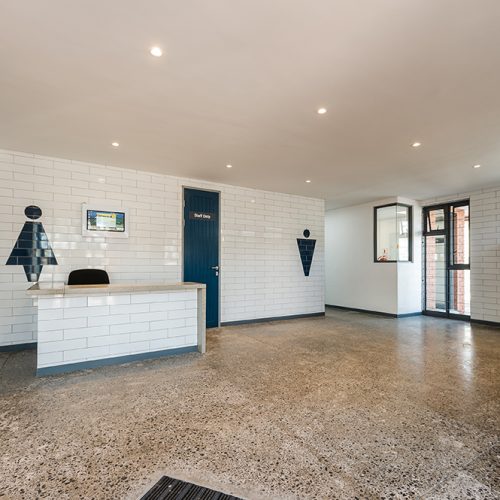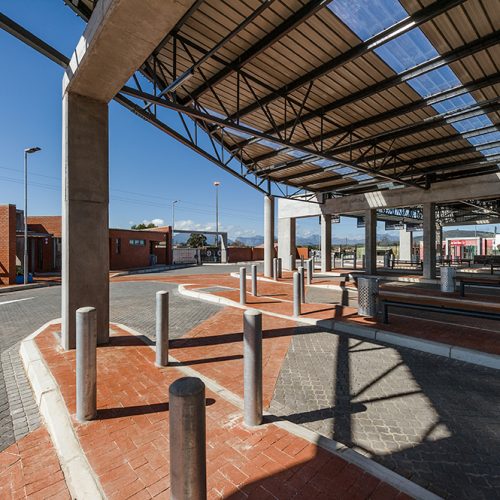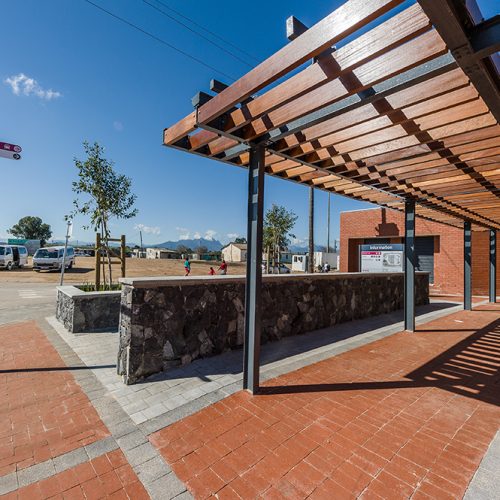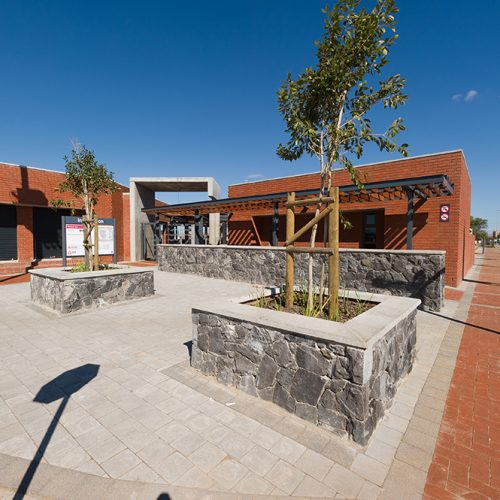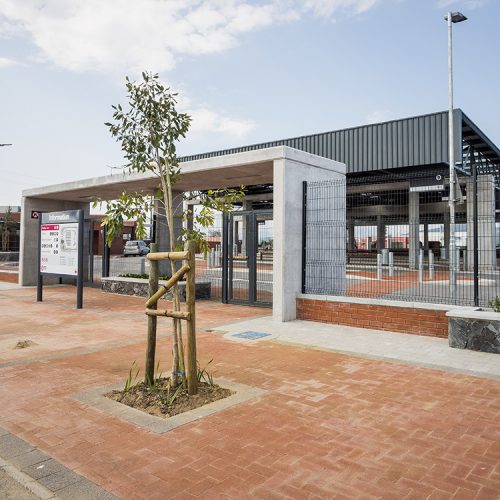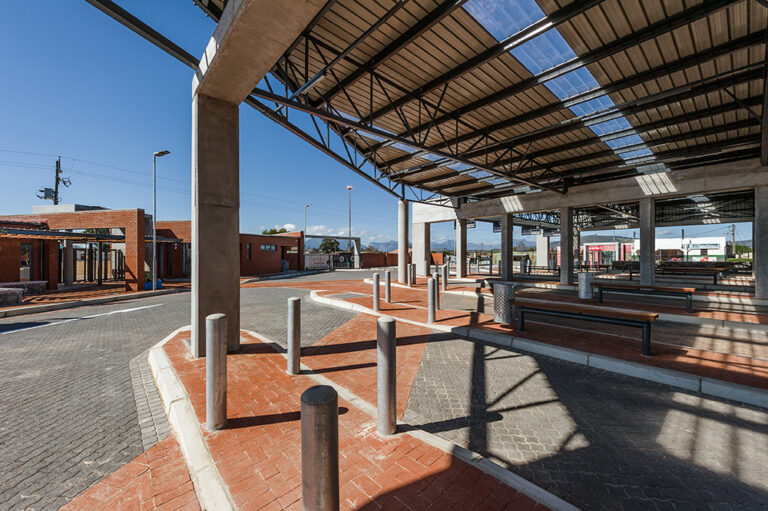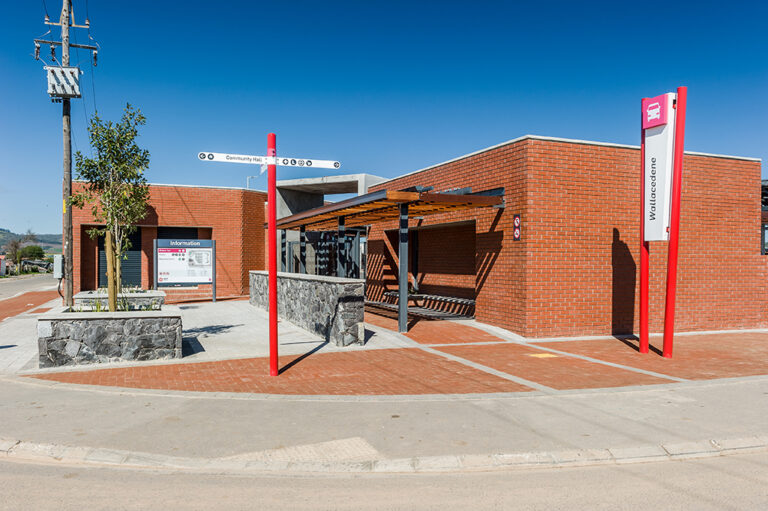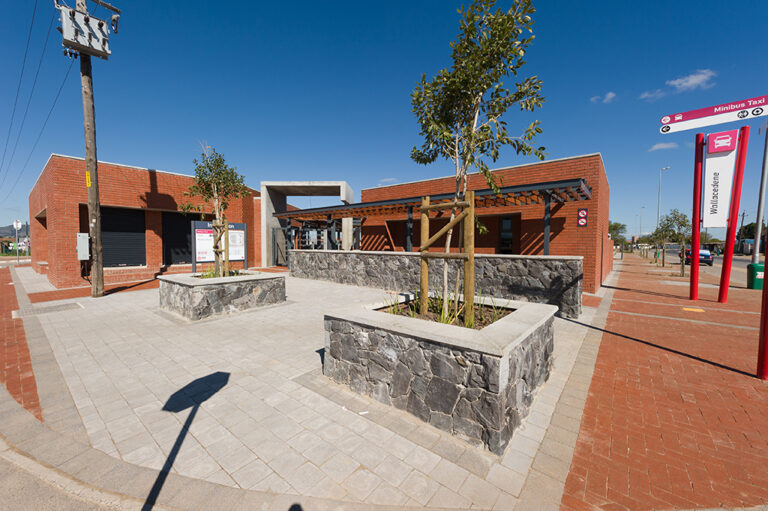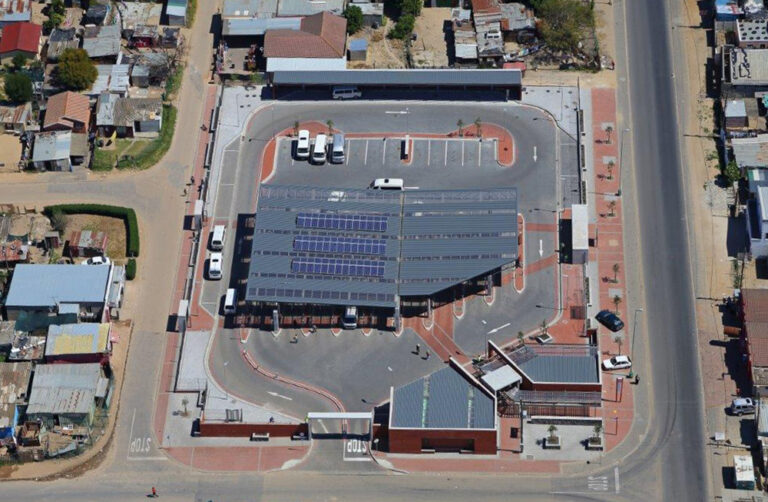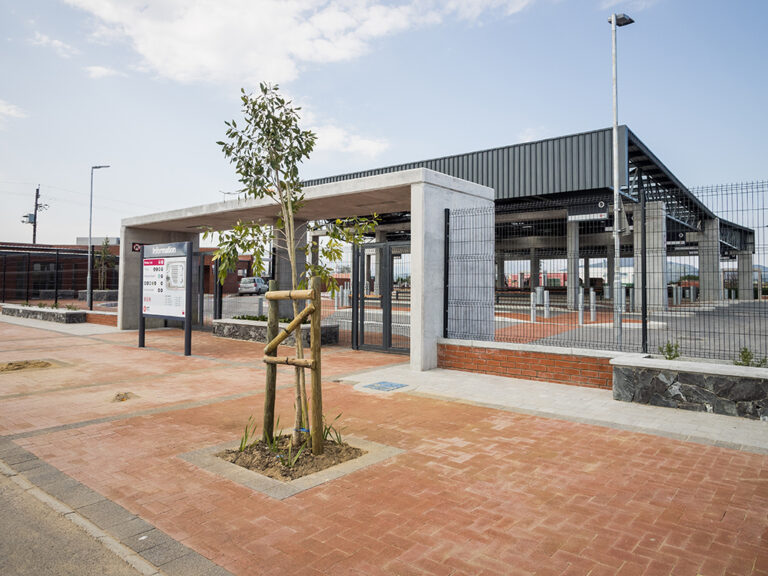Wallacedene Taxi Rank
Type: Transport & Infrastructure
Completion: 2014
Size: 1 Ha
Client: City of Cape Town
The Wallacedene Public Transport Interchange (PTI) in Cape Town comprises of a 10 lane taxi loading area and related facilities, including taxi operator offices and a small retail component. It is a simple architectural arrangement that provides coherent and well-defined spaces in an informal environment, and is an important step in the journey toward urban formalisation in the area. It was commissioned by the City of Cape Town as a formal upgrade to an increasingly important taxi node, which hitherto operated from a dusty field.
The PTI is unequivocally a ‘people place’. Pedestrians are given priority over vehicles through the provision of several clearly-defined and protected entry points and walkways. These link the obvious pedestrian movement patterns across the site, and are clearly distinct from the single vehicle entry/exit point. Several covered, shaded and open waiting areas with a variety of robust seating options are provided, and the sheltered loading bays are naturally lit, universally accessible and have comfortable seating.
The facility incorporates several substantial environmental sustainability interventions. For example, a 20KVA photovoltaic array with battery backup is installed to meet winter requirements, and generates a summertime surplus of electricity. The roof area is used to harvest rainwater for storage in a 12Kl underground tank and pump system for taxi washing, which reduces washbay potable water consumption and related sewer discharge by approximately 80%. The locally-sourced facebrick and exposed concrete (with cement substitution) are high-quality and low maintenance finishes. A large waste management facility has been provided, which enables onsite recycling sorting.
The first ‘green’ transport facility in South Africa that generates its own electricity, enabling it to operate off the electricity grid. Furthermore all the water used at this facility, besides drinking water, is provided for through rooftop rainwater harvesting and recycling.
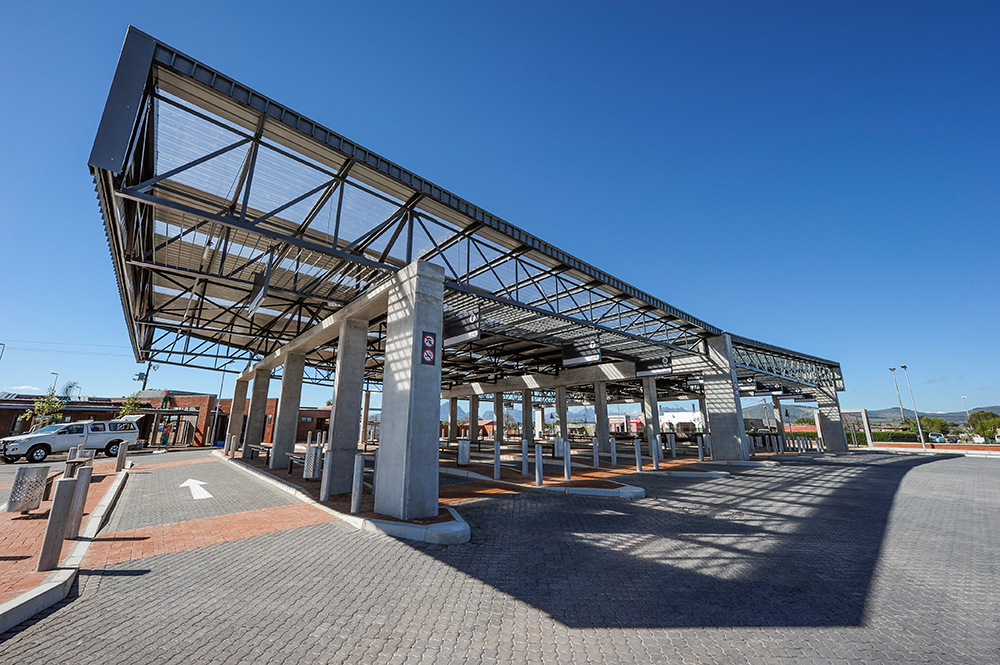
Wallacedene Taxi Rank
Type: Transport & Infrastructure
Completion: 2014
Size: 1 Ha
Client: City of Cape Town
The Wallacedene Public Transport Interchange (PTI) in Cape Town comprises of a 10 lane taxi loading area and related facilities, including taxi operator offices and a small retail component. It is a simple architectural arrangement that provides coherent and well-defined spaces in an informal environment, and is an important step in the journey toward urban formalisation in the area. It was commissioned by the City of Cape Town as a formal upgrade to an increasingly important taxi node, which hitherto operated from a dusty field.
The PTI is unequivocally a ‘people place’. Pedestrians are given priority over vehicles through the provision of several clearly-defined and protected entry points and walkways. These link the obvious pedestrian movement patterns across the site, and are clearly distinct from the single vehicle entry/exit point. Several covered, shaded and open waiting areas with a variety of robust seating options are provided, and the sheltered loading bays are naturally lit, universally accessible and have comfortable seating.
The facility incorporates several substantial environmental sustainability interventions. For example, a 20KVA photovoltaic array with battery backup is installed to meet winter requirements, and generates a summertime surplus of electricity. The roof area is used to harvest rainwater for storage in a 12Kl underground tank and pump system for taxi washing, which reduces washbay potable water consumption and related sewer discharge by approximately 80%. The locally-sourced facebrick and exposed concrete (with cement substitution) are high-quality and low maintenance finishes. A large waste management facility has been provided, which enables onsite recycling sorting.
The first ‘green’ transport facility in South Africa that generates its own electricity, enabling it to operate off the electricity grid. Furthermore all the water used at this facility, besides drinking water, is provided for through rooftop rainwater harvesting and recycling.

Wallacedene Taxi Rank
Type: Transport & Infrastructure
Completion: 2014
Size: 1 Ha
Client: City of Cape Town
The Wallacedene Public Transport Interchange (PTI) in Cape Town comprises of a 10 lane taxi loading area and related facilities, including taxi operator offices and a small retail component. It is a simple architectural arrangement that provides coherent and well-defined spaces in an informal environment, and is an important step in the journey toward urban formalisation in the area. It was commissioned by the City of Cape Town as a formal upgrade to an increasingly important taxi node, which hitherto operated from a dusty field.
The PTI is unequivocally a ‘people place’. Pedestrians are given priority over vehicles through the provision of several clearly-defined and protected entry points and walkways. These link the obvious pedestrian movement patterns across the site, and are clearly distinct from the single vehicle entry/exit point. Several covered, shaded and open waiting areas with a variety of robust seating options are provided, and the sheltered loading bays are naturally lit, universally accessible and have comfortable seating.
The facility incorporates several substantial environmental sustainability interventions. For example, a 20KVA photovoltaic array with battery backup is installed to meet winter requirements, and generates a summertime surplus of electricity. The roof area is used to harvest rainwater for storage in a 12Kl underground tank and pump system for taxi washing, which reduces washbay potable water consumption and related sewer discharge by approximately 80%. The locally-sourced facebrick and exposed concrete (with cement substitution) are high-quality and low maintenance finishes. A large waste management facility has been provided, which enables onsite recycling sorting.
The first ‘green’ transport facility in South Africa that generates its own electricity, enabling it to operate off the electricity grid. Furthermore all the water used at this facility, besides drinking water, is provided for through rooftop rainwater harvesting and recycling.




